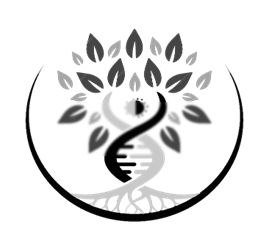Textiles & Fibres
Cotton
Cotton is a staple fiber plant from the genus gossypium, it is primarily composed of cellulose, Cotton has been cultivated for around 7000 years, the species of cotton has around 25 varieties and hybrids, with staple sizes ranging from 20mm to 32.5mm and above, raw cotton varieties are differentiated based on their length, uniformity ratio, trash/impurities content, micronnaire and strength, some raw cotton varieties available in the market are S-6, Memphis/Eastern, Mech, Mcu-5, Bunny, J-34, with ginned/unginned bale sizes and weight of 28.5mm to 54mm and 60kg to 217kg.
KNOW MOREClothing
Clothing is mainly produced in relation to the current fashion trends, be it ready-made or tailor made, and it further becomes casual, formal or commercial, and there are too many to be classified even according to region. For an outfit to comes into circulation they are first designed, technicalities are drawn, patterns are made, fabrics are prepared, they are then cut and sewed, knitted or crocheted together, embroidered or printed upon for a reference sample which is then replicated for larger orders, most commonly used and available ones are of t-shirts, shirts, jeans and hoodies.
KNOW MOREFabrics
Fabrics are made by inter connecting yarn in various patterns in a loom, fabrics or greige fresh out of a loom is cleaned of oils, wax or any impurities, chemically treated, mercerized, washed, dyed etc before they are shipped out to clothing or textile manufacturers. Fabrics are mainly either synthetic, organic or a mix, there are too many fabrics in the market to be listed, but some widely used ones are cotton, chiffon, denim, linen, satin, tweed, twill, nylon, polyester, velvet, khadi, rayon etc, available as various types, blend ratios, gsm, thickness etc.
KNOW MOREYarn
Yarn is a continuous strand of fiber, made by ginning/spinning together fibers from either natural or synthetic sources, although the making process depends on the fiber used by default they are ginned, blown - opened, cleaned & blended/mixed, carded, combed, drawn - doubled & drafted, creeled, ring spun and finally cone wound, yarn are typically spun yarn with s or x twist or filaments which are either mono or multi-filaments, but they are differentiated based on its density, colour and types, some types of yarn are, ring or rotor spun with s/z twist, flat or textured continuous filament, twist-less, self-twist, core, friction spun, folded or plied, cabled, fancy, novelty, gimp & loop, snarl, spiral or corkscrew, slub, cloud, fleck etc.
KNOW MORERaw Plant Fibres
Plant fiber is the most basic raw material used in the making of textiles, any kind of plant with a thick cell walls mostly made of cellulose are preferred to be woven into yarn, the fibers are obtained from various parts of the plants, seeds, bast or the coverings of the stem, shells, leaves, wood, etc. Processing of fibers differs depending on the type but the standard ways are retting, stripping drying and bleaching, Some commonly used are bagasse, cotton, jute, hemp, flax, jute, coconut, kapok, pineapple and bamboo, they are available in various colour, pattern, type, thickness etc.
KNOW MORESilk & Wool
Silk is can be obtained from a variety of inests but the most commonly used species is the larvae of ‘Bombyx mori’, silk is highly sought after due to the variety of properties it possesses, some steps involved in its making or sericulture are, growing & harvesting, stifling & sorting, boiling, deflossing, reeling, twisting & dying, spinning & weaving. commonly used silks are eri, kosa, mulberry, tassar and mooga, they are available in various grades, thickness etc. Wool is the hair from certain animals such as sheep, rabbit, camel, goat etc, wool after it is first sheared off the animal, it is blended, scoured, carbonized, carded, spun, dyed, weaved or knitted. they are graded based on their fineness, some commonly used types are vicuna, alpaca, cashmere, merino, llama, mohair etc,. Silk and wool are often blended in various ratios to obtain a luxurious type of textile that has a heavier weight and twill weave.
KNOW MORECashmere
Cashmere is a kind of fiber obtain from goats native to the region of Kashmir, what makes cashmere so expensive is it limited availability of approximately 150g per year per goat, labor intensity and its peculiar ability to absorb and release water from the air based on the surrounding environment, cashmere is available in grades A, B & C, with A being the most expensive and softest.
KNOW MORE
